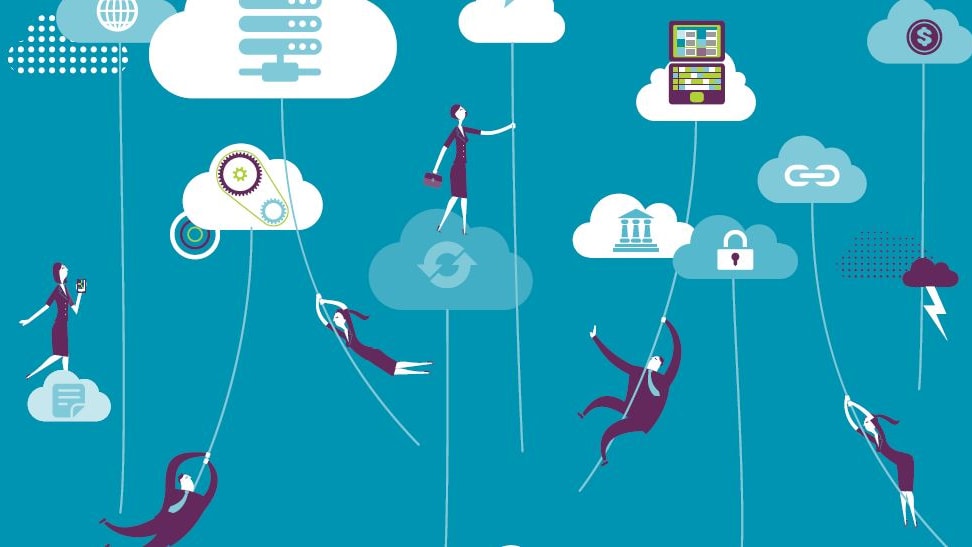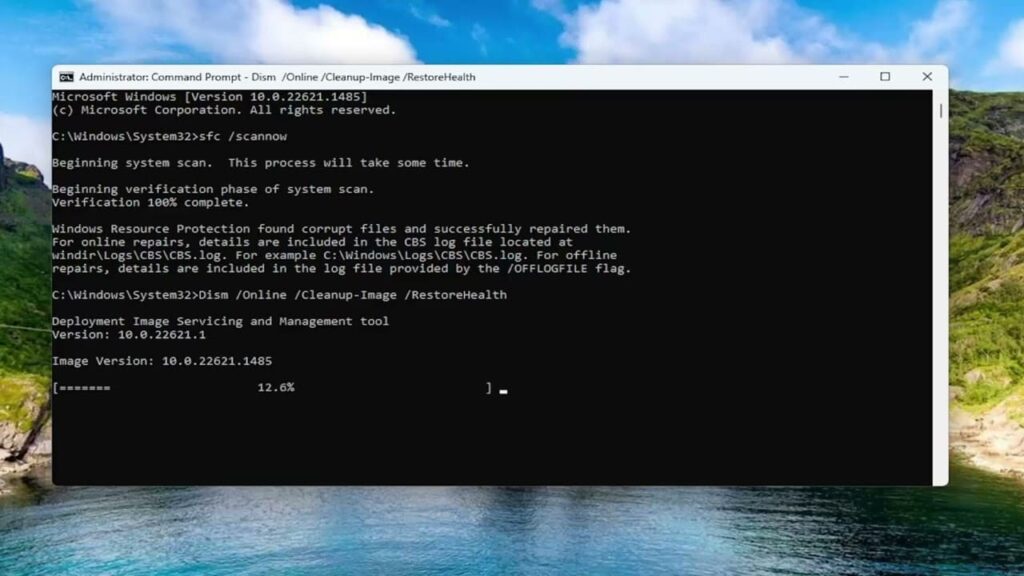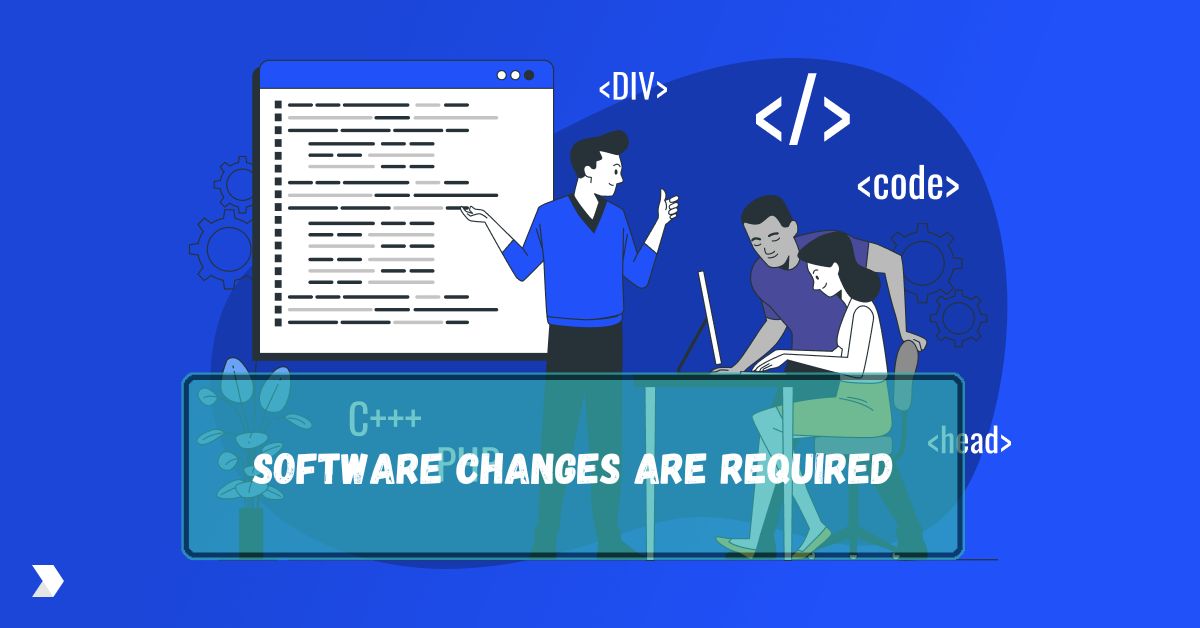In today’s fast-paced digital world, software changes aren’t just necessary-they’re inevitable. Whether you’re a small business or a large enterprise, adapting your software to meet evolving demands is crucial.
Software changes are needed to fix problems, improve how it works, add new features, or keep up with new technology. These updates help ensure the software stays useful and reliable for users.
In this article, we will discuss “Software Changes Are Required”.
Table of Contents
Understanding Software Changes:
1. What Constitutes Software Changes?
Software changes encompass a wide range of activities, from simple bug fixes to major upgrades. They can include modifications in code, updates to functionality, and adjustments to ensure compliance with new regulations.
2. Types Of Software Changes:
There are several types of software changes:
- Corrective Changes: Fixing bugs or errors.
- Adaptive Changes: Adjusting software to work with new environments.
- Perfective Changes: Enhancing software to improve performance or usability.
- Preventive Changes: Making changes to prevent future issues.
The Need For Software Changes:

1. Keeping Up With Technological Advancements:
Technology evolves rapidly, and software must keep pace. Regular updates ensure compatibility with new devices, operating systems, and other software.
2. Addressing Security Concerns:
Cybersecurity threats are constantly emerging. Regular software updates can help address vulnerabilities and protect data from breaches.
3. Enhancing User Experience:
Software changes can significantly improve user experience, whether by adding new features, improving performance, or simplifying the user interface.
Common Triggers For Software Changes:
1. Bug Fixes And Patches:
Even the best software has bugs. Regular updates are needed to fix these issues and ensure smooth operation.
2. Feature Enhancements:
As user needs evolve, software must evolve too. Adding new features can keep users engaged and satisfied.
3. Compliance With New Regulations:
Laws and regulations change, and software must be updated to remain compliant. This is particularly important in industries like finance and healthcare.
The Process Of Implementing Software Changes:
1. Planning And Analysis:
Before making changes, it’s important to thoroughly plan and analyze the impact. This includes understanding the scope of the changes and identifying potential risks.
2. Development And Testing:
Once the plan is in place, development begins. Rigorous testing is crucial to ensure the changes work as intended and don’t introduce new issues.
3. Deployment And Monitoring:
After testing, the changes are deployed. Continuous monitoring is essential to catch any issues early and ensure the software performs as expected.
Challenges In Implementing Software Changes:
1. Compatibility Issues:
New updates may not always be compatible with existing systems. This can lead to disruptions and requires careful planning and testing.
2. Downtime And Disruption:
Implementing changes can cause downtime, which may disrupt business operations. Minimizing this downtime is a key challenge.
3. Managing User Expectations:
Users may be resistant to changes, especially if they’re not well communicated. Clear communication and training can help ease this transition.
Best Practices For Effective Software Changes:
1. Thorough Testing And Qa:
Testing is non-negotiable. Comprehensive QA processes help catch issues before they reach the end user.
2. Clear Communication With Stakeholders:
Keeping everyone informed- from developers to end-users-is crucial for a smooth transition. This includes clear documentation and regular updates.
3. Regular Updates And Maintenance:
Software is never truly “finished.” Regular updates and maintenance are essential to keep it running smoothly and securely.
Tools And Technologies For Managing Software Changes:
1. Version Control Systems:
Version control systems like Git help manage code changes, allowing for collaboration and rollback if needed.
2. Continuous Integration/Continuous Deployment (Ci/Cd) Tools:
CI/CD tools automate the testing and deployment process, making it easier to implement changes quickly and reliably.
3. Automated Testing Tools:
Automated testing tools can quickly run a suite of tests, ensuring that new changes don’t break existing functionality.
Impact Of Software Changes On Businesses:
1. Improved Efficiency And Productivity:
Software changes can streamline processes, making businesses more efficient and productive.
2. Cost Implications:
While software changes can be costly, they often save money in the long run by preventing issues and improving performance.
3. Competitive Advantage:
Staying up-to-date with software changes can give businesses a competitive edge, allowing them to offer better products and services.
The Role Of Agile Methodology In Software Changes:

1. Flexibility And Responsiveness:
Agile methodology promotes flexibility, allowing teams to respond quickly to changes in requirements or technology.
2. Collaboration And Communication:
Agile emphasizes collaboration, ensuring that all stakeholders are involved and informed throughout the process.
Future Trends In Software Changes:
1. AI and Machine Learning In Software Development:
AI and machine learning are revolutionizing software development, enabling faster and more accurate changes.
2. The Rise Of Low-Code And No-Code Platforms:
These platforms make it easier for non-developers to implement software changes, democratizing the development process.
How To Prepare Your Organization For Software Changes?
1. Training And Development:
Investing in training ensures that your team is ready to implement and adapt to software changes.
2. Change Management Strategies:
Effective change management strategies help smooth the transition and minimize disruptions.
What Are The 4 Reasons Why Software Modification Is Required?
1. Bug Fixes:
The software might have errors that need fixing to work correctly. Updates can help remove these issues and improve the program’s reliability.
2. Performance Improvement:
Sometimes software needs adjustments to run faster or use fewer resources. This can make the software more efficient and responsive.
3. Security Enhancements:
To protect against new threats, software often needs updates. These modifications help keep user data safe from hackers and other dangers.
4. Adaptation To New Hardware Or Software:
As technology changes, software must adapt to work with new devices or operating systems. Updates ensure compatibility and smooth functioning with the latest tech.
Is It Mandatory To Update Software?
Yes, it is important to update software. Updates fix problems, improve security, and add new features. Regular updates help keep your software safe and working well.
How To Install Software From SCCM?
To install software from SCCM, open the Software Center on your computer, find the software you need, and click “Install.” Follow any instructions on the screen, and the software will be installed.
Software Changes Are Required SCCM:
Software changes in SCCM are needed to fix issues, improve performance, add new features, or stay updated with technology. These updates ensure your systems are secure and function smoothly with the latest software versions.
SCCM Toast Notification:
An SCCM toast notification is a small message that appears on your screen to inform you about software updates or actions needed. It helps keep you informed without interrupting your work.
SCCM Dialog Window Vs Toast Notification:
The SCCM dialog window is a pop-up that requires user action, like clicking OK. A toast notification is a brief, non-intrusive message that appears temporarily on the screen and doesn’t need interaction.
Software Center And Application Or Update Pop-Up Notification:
Software Center is a tool for installing and updating software on your computer. Pop-up notifications alert you when new applications or updates are available, helping you keep your system up to date.
Disable Software Center Notifications:
To disable Software Center notifications, open the Software Center, go to “Options,” and uncheck the box for notifications. This stops pop-up alerts about new software or updates on your computer.
Windows Update Toast Notification:
A Windows Update toast notification is a small, temporary message that appears on your screen. It informs you about available updates and usually doesn’t require any action from you.
Display In Software Center And Only Show Notifications For Computer Restarts:
When you select Display in Software Center and only show notifications for computer restarts, updates appear only in Software Center. You’ll only receive notifications when your computer needs to restart after an update.
Says Updates Are Needed But They Don’t Show Up?

If your computer says updates are needed but they don’t show up, try restarting Software Center or your computer. Sometimes, a delay can occur before updates appear in the list.
What Are Software Changes?
Software changes are updates or modifications made to a program or application. These changes can include new features, security improvements, bug fixes, or performance enhancements to keep the software running smoothly and securely.
Is It A Must To Update Software?
Updating software is important but not always a must. Updates fix security issues, add new features, and improve performance. Regular updates help keep your computer safe and running well.
Why Am I Getting Software Changes Required To Pop Up On My Pc?
You get software changes required by pop-ups because updates or changes are needed for your programs to run correctly or securely. It ensures your software is up to date and functioning properly.
FAQs:
1. What Are The Most Common Reasons For Software Changes?
Software changes are often driven by the need to fix bugs, enhance features, address security concerns, and comply with new regulations.
2. How Can Businesses Minimize Disruptions During Software Updates?
Planning, thorough testing, and clear communication are key to minimizing disruptions during software updates.
3. What Role Does Agile Methodology Play In Software Changes?
Agile methodology promotes flexibility and collaboration, making it easier to adapt to changes and implement them effectively.
4. What Tools Are Essential For Managing Software Changes?
Version control systems, CI/CD tools, and automated testing tools are essential for managing software changes efficiently.
5. How Do Software Changes Impact User Experience?
Software changes can improve user experience by adding new features, enhancing performance, and addressing security concerns.
Conclusion:
In conclusion, software changes are vital for keeping programs reliable, secure, and effective. By updating software, businesses can fix issues, enhance performance, and stay current with technology. Regular updates ensure a better user experience and help organizations remain competitive in a rapidly evolving digital world.
